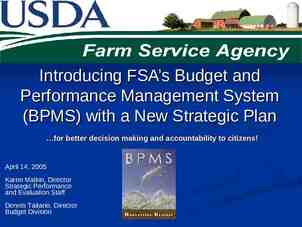MEDIEVAL TIMES 1066-1485 1066-1485
24 Slides1.45 MB

MEDIEVAL TIMES 1066-1485 1066-1485

The distinction “The Middle Ages” comes from the middle period between the decline of the Roman Empire and the Renaissance. The early Middle Ages are often referred to as the Dark Ages. The Middle Ages are also referred to as the Medieval era.

DEFINITION OF THE MIDDLE AGES DATES IN ENGLAND - 1066 - 1485 There is some difference of opinion about the dates which encompassed the Middle Ages. Events in England from the Battle of Hastings in 1066 and ending in the emergence of the English Renaissance period with the Tudor dynasty in 1485 have been included.

The Middle Ages was one of the most turbulent times in English history. It began with the Battle of Hastings and the Norman Conquest. William the Conqueror effectively took all of the lands from the Saxon English and gave them to French nobles. The English Middle Ages then saw the building of the great English castles, including the Tower of London, which helped the Normans to retain their hold on England. The start of the Crusades and the knights of the Middle Ages, including the founding of the Knights Templar.

KNIGHTS TEMPLAR The Knights Templar History started with the crusades of the Middle Ages. This was a holy war that began after Muslims had supposedly overtaken the city of Jerusalem. In a Crusade there were pilgrims who were going to pray in Jerusalem, groomers that cleaned the horses, wives and children of the knights, and two kinds of knights: a mounted knight who rode on a horse and a foot soldier who walked on foot. Some of the knights went on Crusades to get rich or to steal a new home from the people they were fighting, but most of the knights went to get healed of their sins. Richard the Lion Heart (or Richard the I of England) was a famous general in the Crusades. The fourth Crusade (1199-1204) started off with a tournament against the Turks in France but the Crusade ended in tragedy. Most of the armies that went were already half destroyed by the Turks. They didn't reach Jerusalem. All together there were six Crusades in a period of 176 years. The Crusades lasted from 1095 until 1271.

Religion was important to the knights in the Middle Ages. One of the results of the Crusades was the founding of new Christian religious orders. Most of the monks were former knights who fought against each other in the Crusades. The knights did capture Jerusalem for a short period of time, but the Muslims kept on re-taking Jerusalem. The knights gained temporary power, but lost many soldiers during the deadly Crusades, not to mention causing the death of many innocent Muslims. The Crusades is a violent reminder of the greed of Middle Ages.

The Knights Templar went on to be involved in many various battles throughout the Middle Ages. Their ultimate defeat came at Acre in 2191. King Philip IV of France (1268-1314) who was already heavily in debt to the Knights Templar requested a further loan. The Knights Templar refused his request. King Philip IV subsequently ordered the arrest of all Knight Templars in France. The order to arrest the Templars was sent out several weeks before the date possibly giving the Templars time to hide their wealth. On 11 October, two days before the arrest of many Templar Knights, it is recorded in French Masonic history that Templar ships left La Rochelle, heading to Scotland.

On the night of October 13, 1307, all of the Templars' castles in France were surrounded by large bodies of men that were led by small parties of priests and noblemen. When the unsuspecting knights were ordered to open their gates in the name of the king, they immediately complied. Taken completely by surprise, about 900 knights were arrested, and all their property and holdings in France were seized. When word of the arrests reached other countries, other nobles and priests quickly followed suit and imprisoned the Templars wherever they might be found. The knights were accused of many crimes from heresy to homosexuality. Before it was over the Knights had gone into hiding and two were eventually burned at the state. These Knights of Templar are the foundation of an organization that still thrives today—The Freemasons.

FEUDAL LIFE For safety and defense, most communities centered around one master or central lord. Most of the people lived on the manor. The manor consisted of the castle, the church, the village, and the surrounding farm land. These manors were very isolated and received few outsiders save for the occasional pilgrims passing through on their way to the Crusades, peddlers, or soldiers from other fiefdoms.

HIERARCHY OF THE FEUDAL SYSTEM A king (or lord) ruled large areas of land. To protect his land from invasion, the king gave parts of it to local lords, who were called vassals. In return, his vassals promised to fight to defend the king's land. Vassals ruled lands granted to them by their king. Those lands were called fiefs. Within a fiefs, a vassal acted as a local lord and could give portions of it to vassals of his own. Someone might be the vassal of one person, but the lord of another. Knights were warriors who fought on horseback. In return for land, they pledged themselves as vassals to the king. Only the sons of lords could become knights. Candidates for knighthood began training as pages at the age of 7, learning social graces and skills such as fencing and hunting. At 13 or 14 they became squires and began to practice fighting on horseback. Squires served as assistants to knights both in the castle and on the battlefield. At 21 a squire could become a knight himself, kneeling before the lord of the manor to be "dubbed" on the shoulder with a sword. Kings, local lords, and knights were all part-of a ruling class that called itself noblemen.

Noblewomen were the wives and daughters of noblemen. They were in charge of the household servants and supervised the upbringing of children. They also helped take care of the sick and the poor. In certain cases, noblewomen themselves could own land. They could inherit it from their parents or from their husbands. When a nobleman was away, his wife ruled the manor. This meant that the noblewoman, if called upon by her lord, could send knights into battle, just as a man would. Bishops were the leaders of the church, serving under the pope, the bishop of Rome. Most bishops were noblemen. Bishops supervised the church's priests, monks and nuns and administered its business. In many parts of Europe the church owned vast areas of land and commanded a large number of knights. In the early Middle Ages, it was not unusual for a bishop to lead his own knights into battle. Priests provided spiritual instruction and conducted religious ceremonies in local, or parish, churches. Monks and nuns were men and women who gave up their possessions and left ordinary life to live in monasteries and convents. They lived very simply, could not marry and devoted themselves to prayer, study, and helping the poor. They also served as doctors.

Frairs were traveling preachers who lived by begging and spread the teachings of St. Francis of Assisi (see Medieval Voices on p. 34). Serfs lived in small communities called manors that were ruled by a local lord or vassal. Most peasants were serfs. They were bound to the manor and could not leave it or marry without the manor lord's permission. Serfs did all the work on the manor farm: they worked the fields, cared for the livestock, built and maintained the buildings, made the clothing, and cut firewood. Men, women, and children worked side by side. Serfs had small plots of land they could work for themselves; sometimes a serf saved enough money to buy his freedom and became a freeman. Servants were peasants who worked in the lord's manor house, doing the cooking, cleaning, laundering, and other household chores. .

Merchants set up businesses in the towns that began to grow in the later Middle Ages. The most commonly traded items were salt, iron, and textiles. There were also rarer items, such as silk and spices, that came from the trade with China and the Middle East. As trade grew, a new class of highly skilled crafts- people developed. These artisans produced cloth, shoes, beer, glass and other goods that required more expertise than was available on many manor farms. Women plied several of these crafts, and in some, like weaving and brewing, they played the leading role. Traveling merchants brought much-desired items to small towns and villages far from the major trade routes. Minstrels were entertainers who traveled from town to town, often in groups. Most minstrels were singers or musicians, but some had other skills as well. They juggled, did acrobatics, or danced. Minstrels were known by different names in different parts of Europe. In Germany minstrels were called minnesingers, in France jongleurs, in Ireland bards. The most famous minstrels were those of southern France. They were called troubadours, from the Latin word that means "to compose." Many of the love poems they composed in the local language, Provencal, are still read and admired today. The troubadours were so famous that we know 500 of them by name.

THE MIDDLE AGES PART 2: KNIGHTS AND KNIGHTHOOD

KNIGHTS OF THE ROUND TABLE Almost everyone has heard of King Arthur and his Knights of the Round Table. The Knights were men of courage, honor, dignity, courtesy, and nobleness. They protected ladies and damsels, honored and fought for kings, and undertook dangerous quests. These were some of the most famous of the knights besides King Arthur: Sir Lancelot, Sir Gawain, and Sir Galahad.

AN EMBLEM OF THE KNIGHTS During the ceremony that accompanied each man’s becoming a knight, King Arthur gave each a medallion to wear around his neck. This was called the “The Emblem of the Knights.” The Order's dominant idea was the love of God, men, and noble deeds. The cross in the emblem was to remind them that they were to live pure and stainless lives, to strive after perfection and thus attain the Holy Grail. The Red Dragon of King Arthur represented their allegiance to the King. The Round Table was illustrative of the Eternity of God, the equality, unity, and comradeship of the Order, and singleness of purpose of all the Knights.

A CHARGE TO KEEP This is the charge that King Arthur gave each knight: “God make you a good man and fail not of beauty. The Round Table was founded in patience, humility, and meekness.Thou art never to do outrageousity, nor murder, and always to flee treason, by no means to be cruel, and always to do ladies, damosels, and gentle women succour. Also, to take no battles in a wrongful quarrel for no law nor for no world's goods. Thou shouldst be for all ladies and fight for their quarrels, and ever be courteous and never refuse mercy to him that asketh mercy, for a knight that is courteous and kind and gentle has favor in every place. Thou shouldst never hold a lady or gentle woman against her will. Thou must keep thy word to all and not be feeble of good believeth and faith. Right must be defended against might and distress must be protected. Thou must know good from evil and the vain glory of the world, because great pride and bobauce maketh great sorrow. Should anyone require ye of any quest so that it is not to thy shame, thou shouldst fulfil the desire. Ever it is a worshipful knights deed to help another worshipful knight when he seeth him a great danger, for ever a worshipful man should loath to see a worshipful man shamed, for it is only he that is of no worship and who faireth with cowardice that shall never show gentelness or no manner of goodness where he seeth a man in any danger, but always a good man will do another man as he would have done to himself.

Continuation of The Charge It should never be said that a small brother has injured or slain another brother. Thou shouldst not fail in these things: charity, abstinence and truth. No knight shall win worship but if he be of worship himself and of good living and that loveth God and dreadeth God then else he geteth no worship here be ever so hardly. An envious knight shall never win worship for and envious man wants to win worship he shall be dishonoured twice therefore without any, and for this cause all men of worship hate an envious man and will show him no favour. Do not, nor slay not, anything that will in any way dishonour the fair name of Christian knighthood for only by stainless and honourable lives and not by prowess and courage shall the final goal be reached. Therefore be a good knight and so I pray to God so ye may be, and if ye be of prowess and of worthiness then ye shall be a Knight of the Table Round.”

CHIVALRY DEFINED 1. The medieval system, principles, and customs of knighthood. 2. The qualities idealized by knighthood, such as bravery, courtesy, honor, and gallantry toward women. The Knights Code of Chivalry was part of the culture of the Middle Ages and was understood by all. A Code of Chivalry was documented in 'The Song of Roland' in the Middle Ages Knights period of William the Conqueror who ruled England from 1066. The 'Song of Roland' describes the 8th century Knights of the Dark Ages and the battles fought by the Emperor Charlemagne. The code has since been described as Charlemagne's Code of Chivalry. The Song of Roland was the most famous 'chanson de geste' and was composed between 1098-1100, describing the betrayal of Count Roland at the hand of Ganelon, and his resulting death in the Pyranee Mountains at the hands of the Saracens. Roland was a loyal defender of his liege Lord Charlemagne and his code of conduct a description of the meaning of chivalry.

THE CODE Knights Code of Chivalry A knight was expected to have not only the strength and skills to face combat in the violent Middle Ages but was also expected to temper this aggressive side of a knight with a chivalrous side to his nature. There was not an authentic Knights Code of Chivalry as such - it was a moral system which went beyond rules of combat and introduced the concept of Chivalrous conduct - qualities idealized by knighthood, such as bravery, courtesy, honor, and gallantry toward women.

KNIGHTS CODE OF CHIVALRY ACCORDING TO THE SONG OF ROLAND The Knights Code of Chivalry and the vows of Knighthood The Knights Code of Chivalry described in the Song of Roland and an excellent representation of the Knights Codes of Chivalry are as follows: To fear God and maintain His Church To serve the liege lord in valour and faith To protect the weak and defenceless To give succour to widows and orphans To refrain from the wanton giving of offence To live by honour and for glory To despise pecuniary reward To fight for the welfare of all

WAIT! THERE’S MORE To obey those placed in authority To guard the honour of fellow knights To eschew unfairness, meanness and deceit To keep faith At all times to speak the truth To persevere to the end in any enterprise begun To respect the honour of women Never to refuse a challenge from an equal Never to turn the back upon a foe Of the seventeen entries in the Knights Codes of Chivalry, according to the Song of Roland, at least 12 relate to acts of chivalry as opposed to combat.

KNIGHT’S CODE AS DESCRIBED BY THE DUKE OF BURGANDY The chivalric virtues of the Knights Code of Chivalry were described in the 14th Century by the Duke of Burgandy. The words he chose to use to describe the virtues that should be exhibited in the Knights Code of Chivalry were as follows: Faith Charity Justice Sagacity Prudence Temperance Resolution Truth Liberality Diligence Hope Valour

SOURCES USED FOR THIS POWERPOINT http://www.unexplainedstuff.com/Secret-Societies/TheKnights-Templar.html www.middle-ages.org.uk http://www.learner.org/interactives/middleages/feudal.html http://www.themiddleages.net/people middle ages.html http://www.kyrene.k12.az.us/schools/brisas/sunda/ma/ 1kyle.htm http://www.kingarthursknights.com/knights/default.asp http://www.answers.com/topic/chivalry






